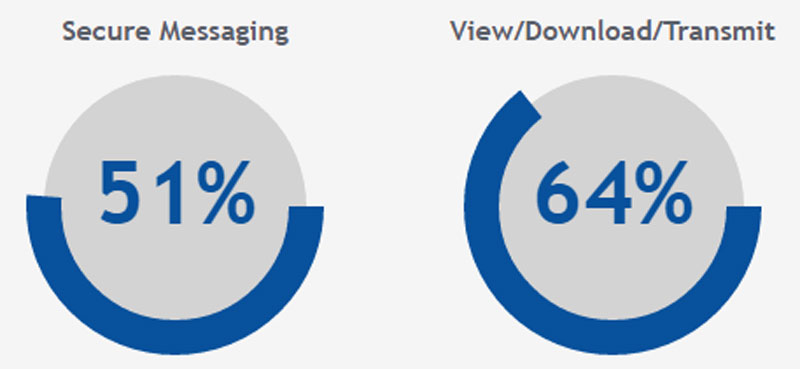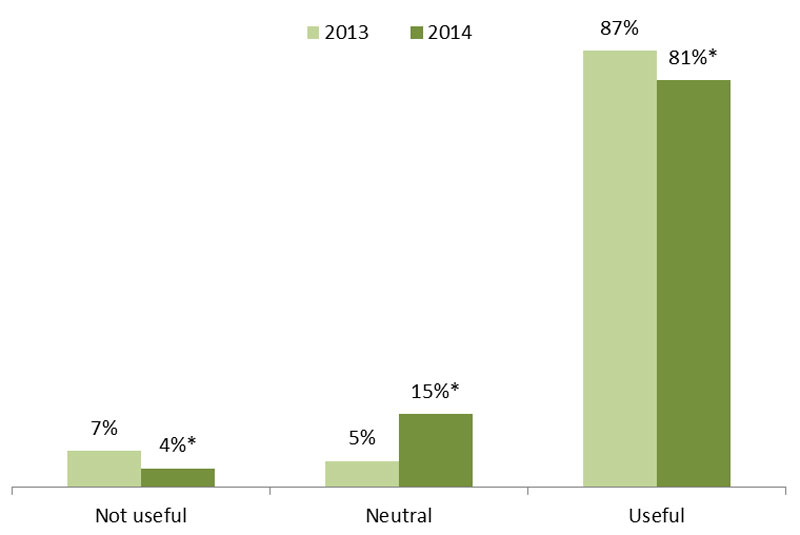
metamorworks - stock.adobe.com
How Patient Portals Improve Patient Engagement
Patient portals are a regularly talked-about technology in a doctor's tool belt, but how can they use the portal to boost patient engagement?
What are patient portals?
Patient portals are an online website that is connected to the EHR, centrally focused on patient access to health data. These tools give patients a look into various data points, including lab results, physician notes, their health histories, discharge summaries, and immunizations.
While it is standard fare for patient portals to include much of that information, it should be noted that not all portals are created equal.
Some portals only allow patients to view demographic and medical history data, while others provide real-time lab results updates. The data available to the patient through the patient portal often depends upon the portal vendor, as well as the standards at the particular healthcare facility.
Patient portals go beyond providing patients with a window into which they can view their health data. Most portals include features such as direct secure messaging, online appointment scheduling, online bill payments, prescription refill requests, and sometimes even data update capabilities.
Just as was discussed above, not all portals will enable all features. While most portals include secure messaging features, they may not all include some other capabilities.
Dig Deeper:
- mHealth, Patient Portal Boom Increases Patient Engagement
- Debating Role of Patient Portal in Health Data Integration

How common are patient portals?
This technology is becoming increasingly popular throughout the healthcare industry. According to the National Coordinator for Health Information Technology (ONC), 64 percent of hospitals gave their patients access to view, download, and transmit their health data in 2014, and 51 percent had the ability to secure message with their patients.
Much of this growth is due to the Centers for Medicare & Medicaid Services meaningful use requirements. As noted above, patient portals are an online engagement tool that allows patients at least partial access to their EHRs. Part of CMS’s protocol for meaningful use of the EHR was therefore tied to patient portal use.
These tools aren’t just for desktop computers anymore, either; healthcare organizations are leveraging patient portals for mobile use, and patients are responding. According to a recent HIMSS survey released during its 2016 conference, 58 percent of healthcare professionals connect with their patients via mobile optimized patient portals.
This popularity is all for a good reason. While it is true that not all patient portals have all of the same features, these tools do hold a lot of power as patient engagement and satisfaction drivers. Through a deep understanding of all that patient portals can do, providers can leverage these tools to help boost patient engagement and keep serving their clients’ needs outside of the four walls of the hospital.
Dig Deeper:
What are patient portals’ benefits?
As noted above, patient portals have several benefits, mainly pertaining to patient access to health data. Research shows that when patients are able to see their own health data, they gain ownership of their own wellness and are better prepared to interact with their providers about their care.
However, patient portals also hold several other benefits. For instance, these tools are major drivers of patient loyalty.
Because portal features like secure messaging facilitate strong bonds between patients and providers, these tools make patients want to return to a certain provider.
According to David Clain, research manager at athenaResearch, building patient loyalty through the portal is all about making the patient feel comfortable and valued by the provider.
“If you are a patient at primary care practice or you have some cardiac issue and you have an ongoing relationship with a cardiologist, I think it’s really helpful to be able to continue the conversation outside of the office,” Clain says. “And once you’ve done that a couple of times, you feel that connection to your provider, you have a sense that they are committed to your health and to ensure that you have good outcomes.”
Clain also says these secure messaging features can help boost chronic disease management. When a provider can regularly check in with their chronically ill patient, they can ensure that proper follow-up measures are made and the patient comes into the office when necessary.
“The portal becomes sort of the hub for managing especially patients with chronic diseases outside the office, bringing them back into the practice when you need them,” Clain notes. “It’s not just how you get a patient to come in and fill a spot, but how you make sure that you see them often enough that you can really have a good handle on their health status and you can intervene early and often if you have to.”
Dig Deeper:

Do users like the patient portal experience?
While it’s clear that patient portals offer users a window into their own health by making EHR data more accessible, it is important to note the role they can play in boosting patient engagement and patient satisfaction.
On the whole, patients tend to like having this view of their health data when it is offered to them. According to ONC, nearly 80 percent of patients who accessed their health data in 2014 found that access beneficial.
Other studies show that patients’ ability to directly view doctors’ notes helps enhance care. One study conducted at Geisinger Health showed that patients with access to doctors’ notes actually had higher rates of medication adherence because they were more engaged in and informed of their treatment plans.
Although users do tend to like patient portals, and the tools have proven healthcare benefits, they still aren’t being used to their fullest potential.
One survey conducted by HealthMine shows that despite the high portal adoption rate, only 20 percent of patients use their portals to engage in shared decision-making with their providers.
Other research indicates the same. One Massachusetts-based research team showed that while patients do appreciate reviewing their health data, they rarely use this to initiate care-related conversations with their providers.
Dig Deeper:
How do providers feel about patient portal use?
Considering the plethora of patient-centered benefits portals can bring, it is not surprising that these tools may be well-received by patients. However, it’s important to note that providers value patient portals, too.
Provider’s fondness for the patient portal is not entirely tied to meaningful use requirements. According to industry experts, providers tend to like patient portals for a lot of the same reasons patients do.
This is mainly because providers are trying to build a relationship with their patients, not just bolster patient loyalty. For many providers, patient portal use is about building trust and enhancing care.
“Providers are trying to have relationships with these individuals and be able to effectively communicate with that population,” says Zach Wood, director and general manager of member engagement at Cerner.
“Having bi-directional messaging between the patient and provider, not only is convenient on both sides, but it saves an administrative burden as well,” he continued. “And being able to show that health record to the patient enhances the communication lines and provides self-service which is great for the patient and the provider.”
Further, portals help providers educate their patients and prepare them for future care encounters. When patients have access to their health data, they are better informed, and have the potential to generate deep and meaningful conversations regarding patient wellness during doctor’s appointments.
Dig Deeper:
How do providers promote patient portal use?
While patient portal benefits may sound enticing, they aren’t entirely effective if patients do not adopt them. As noted above, patient portal adoption is increasing, but there is still room for it to grow.
Several industry experts claim that the burden of bolstering patient portal buy-in lay mostly on the provider.
According to Wood, explaining the benefits of the portal and encouraging adoption is something every provider should be doing during each care encounter.
From there, patient engagement strategies will ideally grow.
“You need a starting point with that relationship, but once you’ve started using it in some of the ways we’ve talked about, you definitely have more engaged populations,” Wood notes.
Industry research backs this claim up, repeatedly showing that positive provider testimony is hugely effective in promoting patient portal adoption.
Providers must also understand the characteristics of certain patient populations which influence patient portal adoption. Research shows that minority ethnicities have lower rates of patient portal adoption, potentially due to lack of access to technology or lack of technology literacy.
User age is another notable characteristic. According to Clain, too many providers assume that just because their patients are older, they may not want to use the portal. Clain’s research shows that is not the case.
Patients reaching their 60s are just as likely to use their portal, potentially due to their familiarity with the technology. Because of this, it is likely that portal adoption amongst older patients will continue to grow.
“If you look at patients in their 60s and up to 65, a lot of those patients are still in the workforce. They’ve had iPhones for 10 years since they were in their mid-50s,” Clain explains.
“So I think that a lot of those patients are comfortable with using technology, and a patient portal may be a new approach to working with their physicians in a way that they didn’t do before, but they’re comfortable getting online, they’re comfortable using their phones to get on a portal, or using a computer.”
Going forward, providers will need to maintain a pulse on the patient portal market.
By understanding the growing popularity of patient portals, their benefits, and their uses, providers can better leverage them to boost patient engagement.
Providers must understand which patient populations are and are not likely to utilize the patient portal. By identifying populations with lower adoption rates, providers can target their engagement strategies to encourage portal adoption, helping them to deliver better care to their patients in the long-run.
Dig Deeper:
- ONC Shows Disparities in Patient Access to Health Data
- How to Improve Patient Portal Use in Emergency Care






